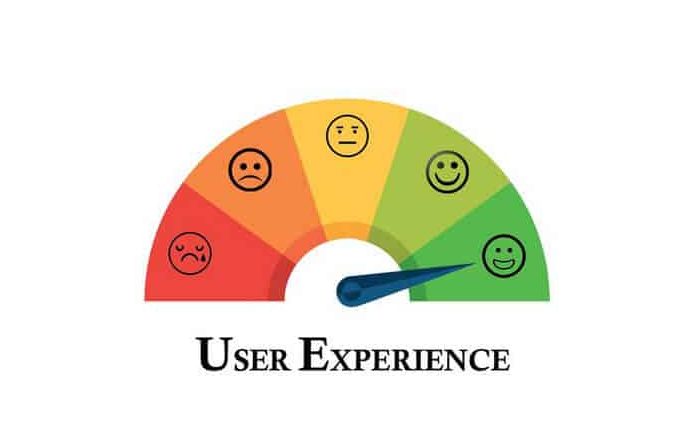The choice of the proper framework for your project will define whether your site or application runs efficiently, grows easily, is secure enough, and provides good user experience. Whether an eCommerce platform, content-based site. Or a real-time application, the assigned web development framework will make or break the website in terms of performance, scalability, security, and user experience.
Hosting your best framework or any project requires looking for the right place. With Hostao, you can be sure that our strategy revolves around what the business needs, who the target audience will be, and even your long-term growth plans. This confirms that your website grows effectively in UX and its technical side, ready for a massive expansion in the future.
Let’s dive into some of the popular ones, the advantages they have, and how you could figure out the perfect one for your specific projects.
1. Defining the scope and requirements of the project
Before getting into technical details, define the scope of your project. This includes critical aspects such as:
- Audience and traffic volume: Will your website have thousands of concurrent users? You would need more scalable frameworks.
- Nature of the content: will it need complex real time activities by the users or will it be just a static content server?
- User Experience: It ought to be fast, responsive, and friendly to use. Responsive frameworks that can handle rich interactions well are important for a smooth UX.
- SEO: Your online business has to optimize the website for search engines. The way you choose your framework has to lend itself to good SEO practices to enable proper practices with page load speed and mobile responsiveness.
They do a very deep needs analysis to make sure they understand the full scope of your project and then align the framework for you. Enterprise-level applications to small-scale dynamic websites, the choice of which framework will hold a big role in the success of your project.
2. Populer Front-End Framework: React, Vue, Anguler
Front-end frameworks therefore determine how users interact with your website. They influence the user interface, which is responsiveness of the site and the user experience.
React.js
React.js is one of the famous front-end frameworks owned by Facebook. It is ideal for building interactive, high-performance user interfaces.
- Component-Based Architecture: React slices the UI into reusable components, which makes development faster and efficient. This approach is excellent for large-scale applications with complex UIs.
- SEO-Friendly: Server-side rendering using tools like Next.js can also improve React to result in quick page load times while improving search engine rankings.
- Best Uses: React is excellent for eCommerce websites, dashboards, or any application requiring dynamic user interaction.
Vue.js
Another powerful JavaScript-based framework is Vue.js, which is lightweight and extremely flexible. It’s great for small applications, but is also very apt for large projects when the speed of development cycles must be short.
- Easy Learning Curve: Vue is very beginner-friendly and less complex than React or Angular. This makes it ideal for projects where usability and speed of development are key concerns.
- Flexibility: Vue has a good balance between performance and simplicity. You can use it in such a way that you create anything from SPAs to even more complex systems.
- Ideal Use Cases: Small to medium-sized websites, interactive interfaces or applications with less complex requirements on data handling.
Angular
Developed by Google, the full-fledged framework Angular can be utilized to build interactive enterprise-level applications. It possesses the whole toolset: everything from routing to form validation is available right out of the box.
- Two-Way Data Binding: Anguar’s facility for data binding synchronizes the user interface with the under-lying data model. This makes the tool ideal for real-time update applications.
- Modular Development: Angular is highly scalable because it natively has modularity embedded inside, making it the first preference for enterprise-level applications.
- Ideal Use Cases: Enterprise applications, CRM systems, and large eCommerce platforms.
In Hostao, we focus only on those frameworks that give the best balance in the terms of flexibility, performance, and scalability. To be honest, React fits high-user-interactive projects, and Vue is actually more used in small projects with a very easy and effective approach. For an enterprise, however, Angular is the definite choice because it promises so many scalable needs and most importantly, Strengthening infrastructure.
3. Back-End Frameworks: Powering Your Application
The front-end frameworks will confirm a good experience in your application, but back-end frameworks would be the nerve that runs in the backbone of your web application. It holds all the data while taking good care of server-side logic and confirming security.
Laravel (PHP)
Laravel is one of the most widely used back-end frameworks in the PHP ecosystem. With elegant syntax, powerful tools, and utilize, Laravel makes routine activities like routing, authentication, and caching easier.
- Security: Laravel comes with some built-in security features like encryption, password hashing. And protection from common vulnerabilities like SQL injection and cross-site scripting (XSS).
- Scalability: When your website is scaling, Laravel will let you do it without overhauling your codebase, which makes it perfect for content-heavy as well as eCommerce websites.
- Ideal Uses: Large content-driven websites, eCommerce platform and the website that requires user authentication or complex workflows.
Node.js
Node.js is a JavaScript-based back-end framework capable of providing non-blocking I/O at high performance and is hence ideal for data-intensive applications. And any application where real-time responses are necessary.
- Asynchronous Processing: Node.js is designed with the concept in mind, whereby there are applications that need to process more than one request at any one time, such as for instance real-time messaging tools or live feeds and streaming services.
- Full-Stack JavaScript: If you’re already using JavaScript on the front-end with React or Vue, Node.js lets you have a unified language up the stack, making development easier and bringing time to market down.
- Best suited for applications: Real-time applications, chat systems, live-streaming websites, and data-heavy dashboards.
Django (Python)
Django is a high-level Python web framework made for really secure, really scalable web applications that can be built quickly.
- Security Focus: Django enters the scene with security features like SQL injection prevention, cross-site request forgery protection,. And anti-clickjacking out of the box.
- Rapid Development: It follows the “batteries-included” philosophy of Django, giving you many built-in features, shortening the development time and launching it very quickly.
- Ideal Use Cases: Projects that require very high security demands, data-driven applications, and platforms that need rapid iteration.
Hostao utilizes such back-end frameworks depending on the complexity of the project and its long-term requirements, confirming you a safe, scalable solution that will grow with your business.
4. SEO Optimization Frameworks
SEO is one of the most vital aspects of web development today as well. The viewability and ranking of your site can be completely made dependent on your choice of web development framework . At Hostao, every project involves integrating the best practices of SEO-optimized mobile-first design to optimize load time.
Next.js and Gatsby.js
Next.js and Gatsby.js will be the best choices for applications that heavily rely on good SEO performance. Both are based on React, and their main features are server-side rendering and static site generation in order to speed up and improve SEO.
- Next.js: This framework is yet a way to go for server-side rendering. Its pages are faster and confirm much better SEO. In addition, the web development framework has static generation; this makes your website superfast.
- Gatsby.js: Gatsby is stellar for static site generation, well-suited to blogs, documentation sites, and content-heavy websites. The fast loading time and optimized builds bring out a leading SEO performance.
- Best suited for: Websites with high concern for SEO, blogs, and content-intensive sites.
5. User Experience and Performance
User experience is at the heart of any website that ultimately finds success, and the web development framework you choose plays a huge role in how users interact with your site. Smoother, more responsive, and intuitive UX can drive higher engagement and conversion.
React + Next.js
The superior interactivity along with blazing-fast performance for your website can be achieved using React and Next.js. Such projects need the highest user interaction like an ideal dashboard or eCommerce site.
Vue.js
This version of Vue.js is lightweight and easy to maintain, having outstanding UX performance. It is perfect for small to medium-sized projects that need responsiveness and functionality to be really great.
We work at Hostao to create user-experience-centric websites by choosing frameworks which support fast page-load time, silky smooth navigation, and unimpeded fluidity.
6. Selecting the Right Framework According to Type of Project
Different types of projects have different special requirements, and here’s how some web development frameworks fulfill the demands for those different types of projects:
- eCommerce websites: For eCommerce sites, you require fast loading time, secure payment system, and scalability. Thereby, the combination of React or Vue.js along with Node.js or Laravel on the back-end can provide for a secure, scalable, and dynamic system.
- Real-time Applications: For real-time applications like any chat platform, Node.js would be the best fit as it is apt for many concurrent requests that are very characteristic of real-time interactions.
- Content-Driven Websites: For blogs and content-heavy websites, Next.js or Gatsby.js with React will ensure better SEO, loads faster, and is easy to maintain.
Hostao’s process is a profound understanding of your project requirements and intent. Whether it is an eCommerce platform, a real-time application,. Or a content-driven site, we pick the best framework that offers an excellent combination of performance, security, and scalability.
7. Long-Term Scalability
At Hostao, we tend not to look at immediate needs but rather to the longer run and growth of the projects. A project that may appear rather small in size can grow significantly in a very short period. And the web development framework you choose must be able to scale along with increased traffic and functionality over time.
- React and Node.js are known for their scalability, making them perfect for projects that would show massive growths.
- For businesses, however, that need to expand the capabilities of a website without completely overhauling their code, Laravel and Django are very good options.
Conclusion
Choosing the right web development framework is always critical and will affect the success of your website. This is why, at Hostao, we help you sort through all these choices by understanding how your business needs align with these appropriate technologies. Our approach confirms your project is built on a web development framework that covers your current needs as well as positions you for long-term success.
As a master's graduate in Computer Science, I blend my technical expertise with a passion for crafting content that simplifies complex topics. My focus is on creating clear, engaging material that resonates with a diverse audience. By staying current with trends in SEO, social media, and content strategy, I aim to produce content that not only educates but also connects, bridging the gap between technology and its users.





















